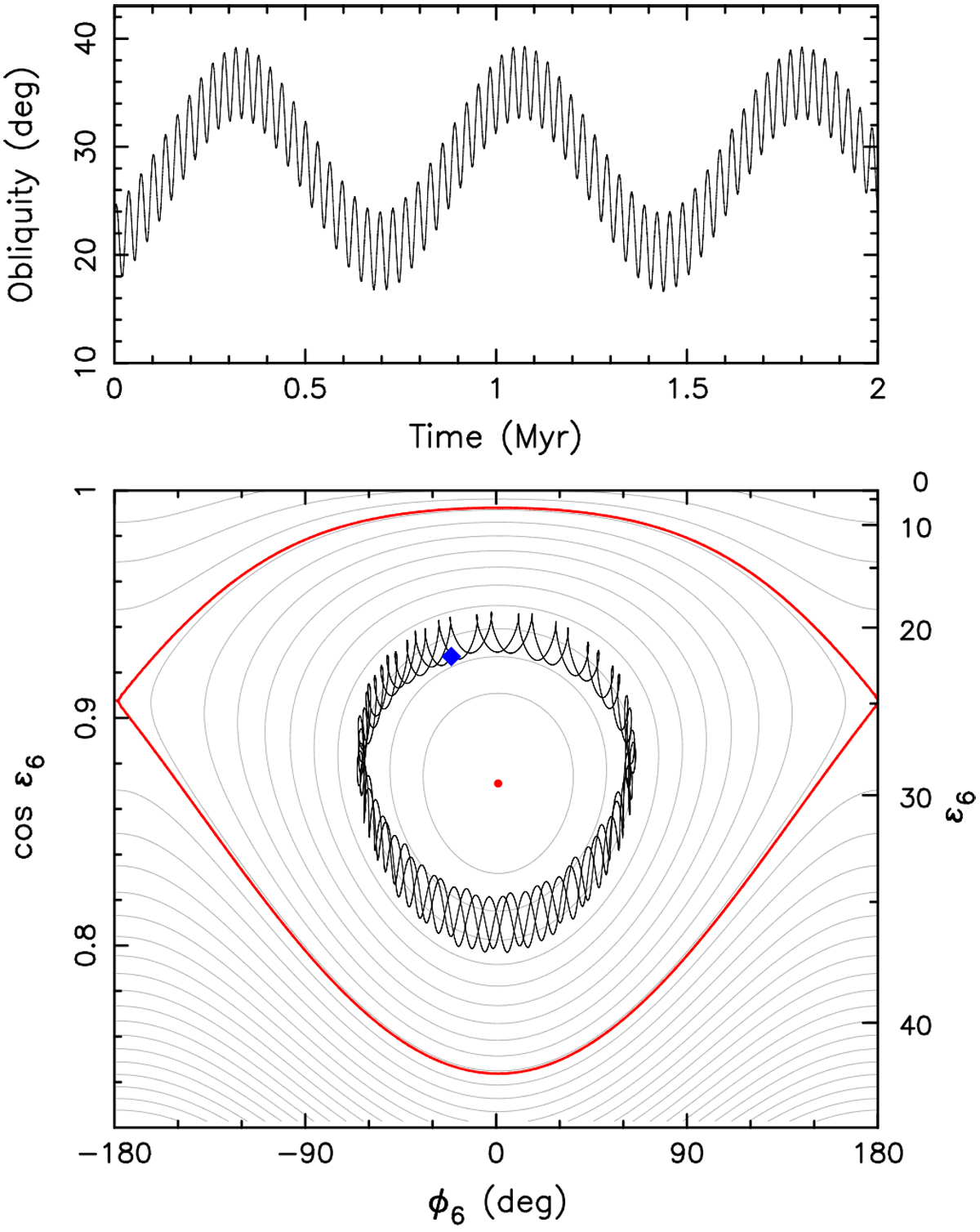Fig. 4

Top panel: time evolution of the osculating obliquity ε for (208) Lacrimosa over the 2 Myr interval using numerical integration of Eq. (A.1) with Tng = 0. The initial conditions at the present epoch from the best-fit rotation state solution (P = 14.085734 h, λ = 15.2° and β = 66.9°) and Δ = 0.23. The short-period oscillations are due to the proper term of nodal precession with frequency s (which have a period of ≃2π∕(s − s6) ≃ 32 kyr). The long-period and large-amplitude oscillations of ≃745 kyr are due to libration about the resonant Cassini state 2 associated with frequency s6 (“the Slivan state”). Bottom panel: phase portrait of the Colombo top model for the s6 frequency and precession constant α ≃ 29.75 arcsec yr−1 (i.e., P = 14.085734 h and Δ = 0.23 in Eq. (A.4)); the ordinate is either cosε6 (left) or ε6 (right) and the abscissa is φ6. The light-gray curves are isolines of the first integral C(ε6, φ6) = constant given by Eq. (A.11). Critical curves of the spin-orbit resonance, namely the separatrix and the stable equilibrium C2, are highlighted in red. The black curve is the numerically integrated pole of (208) Lacrimosa from the top projected into the plane of these variables; the blue diamond is the current position of the pole.
Current usage metrics show cumulative count of Article Views (full-text article views including HTML views, PDF and ePub downloads, according to the available data) and Abstracts Views on Vision4Press platform.
Data correspond to usage on the plateform after 2015. The current usage metrics is available 48-96 hours after online publication and is updated daily on week days.
Initial download of the metrics may take a while.


